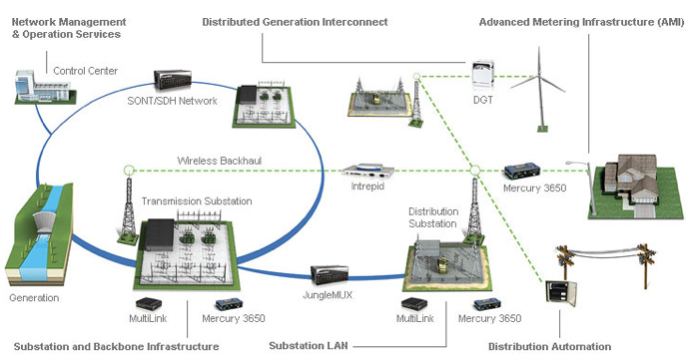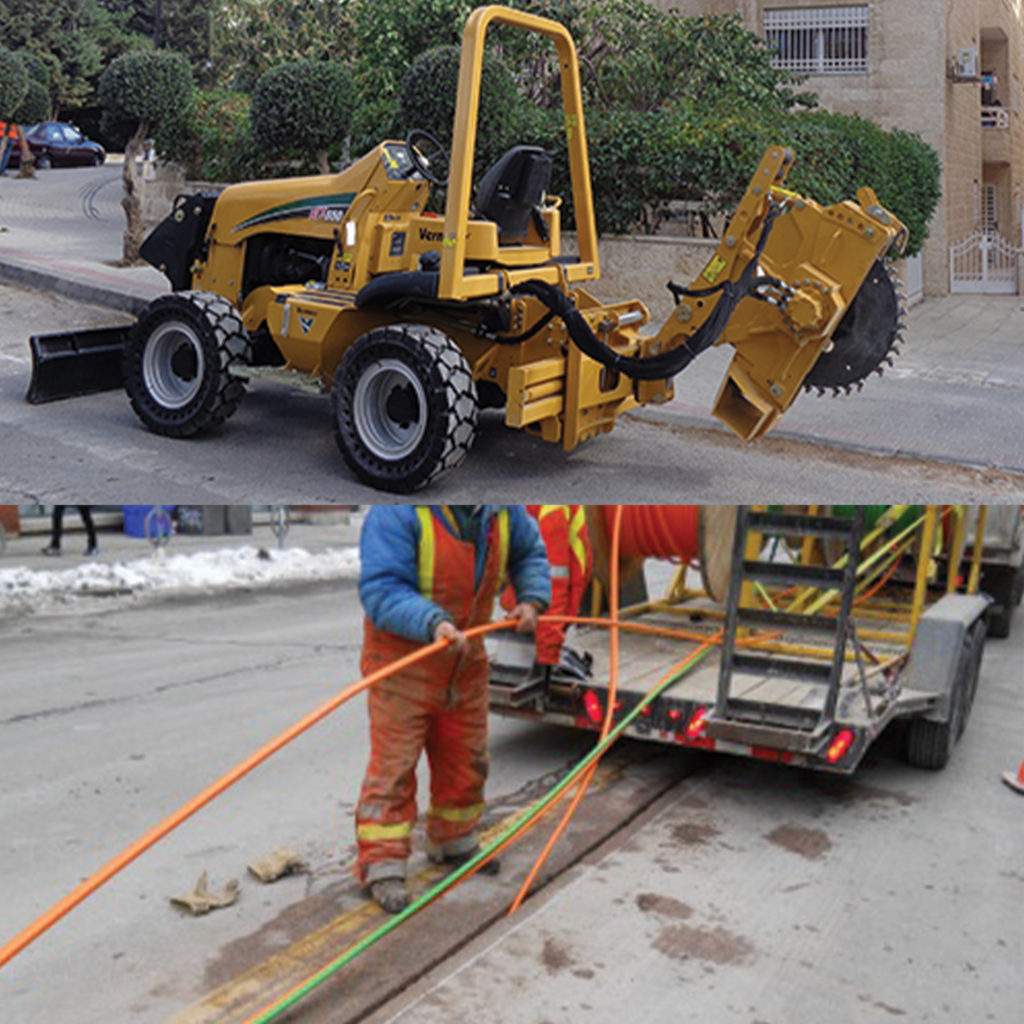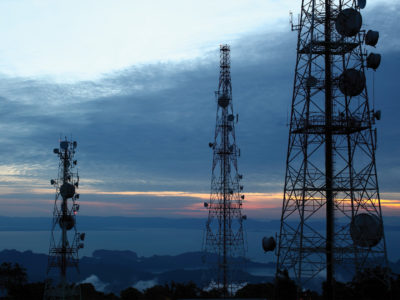A New U.S. Fiber-Optic Communication Grid. We are going into the Communication Business. The Plan is simple:
Build our own Telecommunications / Mobile Technology Network. Why? To bring affordable communication to everyone, but also to facilitate our Health Care Network, our Education Network, our Banking Network, our Security Network, our Federal Government Network, and every other Department and Federal Business We would now own.
Logistics
Step 1: Take out a loan from the National Bank to cover Infrastructure Costs (estimated at $159 billion*).
Step 2: Lay Fiber FTTP ground cable / high fiber-optic Cable for Communities to get best quality possible (in anticipation of AI and IoT, or whatever the next big thing will be).
Step 3: Only charge people enough to cover the Bank Loan (which includes the initial Labor costs + the cost to create all the Federal Communication Networks, Databases, and Cybersecurity + the cost for local maintenance, etc.).
Bonus: As the People pay their Communication bills, they are paying into their own Retirement Dividend

Step 4: Keep other options open. Look at what AT&T and AirGig are doing [sending internet over power lines], as We would now also own the power lines. Also see if Elon Musks satellite idea is going to fly, and perhaps get him some National Bank funding.
*It is important to note that National Bank money is not creating debt, so the more the communication grid costs, the more money—realized in Retirement Dividends—we would each receive.
The idea of a public internet might seem utopian, but it’s how the network began. Our money created the internet, before it was radically privatized in the 1990s. Big companies seized a system built at enormous public expense in order to sell us access to it – the equivalent of someone stealing your house to charge you rent.
Math
Laying of Fiber FTTP ground cable / high fiber-optic Cable can be as high as $20,000 per mile, and $600 per house to hook up.

A method that is becoming increasingly popular in urban areas is ‘microtrenching.’ This involves using a diamond circular saw to cut a 8-12 inch deep, maximum 1.5-inch wide trench into sidewalks or roads. Micro-duct is then laid into the trench and hot polymer is poured in to seal the trench. Micro-trenches are typically 0.75 inches to 1.25 inches wide and 8 to 16 inches deep. This avoids the risk of hitting gas lines, as those are typically buried a minimum of 24 inches deep.
We have Water Infrastructure, Energy Infrastructure, New Smart Roads, and New Transportation Infrastructure to build. We will use a ‘Dig Once’ policy (also called ‘One Touch’): plan out all construction in advance and dig up the pavement only once. Since We would be giving America a complete ‘ makeover’, it would be wise to re-think access and other ‘user-friendly’ logistics, again, to save money in the long run.
To be fair to all methods:
• Micro-trenching = $21 / ft
• Deep Trenching = $73 / ft
• Aerial (uses power line poles) = $3 / ft
• Open Trench = $10 / ft
• Rockwheel (24” depth) = $28 / ft
Takeaway: the open trench (maybe along with other infrastructure laid inside) or the aerial route is financially appealing.
Another ‘Bonus’ To Doing All This Ourselves
If We build with the future in mind, and our new stuff has a shelf life longer than the 30-year loan used to build it, all utility bill payments from that point forward would be essentially ‘pure profit’; the money for Communication, Housing, Energy and Transportation would generate dividends past its initial investment. Looking at the numbers below, the People may decide to vote for this particular loan to be of the 10 or 15-year variety, since the monthly utility bill would be much less than we are all paying currently
LAYING FIBER OPTIC CABLE – NOTES
- Highest density City: New York City = 27,000 people per square mile
- Highest density State: New Jersey = 1,210 people per square mile
- Urban land area is 106,386 square miles, or 3% of total land area in the U.S
- Taking in entire US, the average is 87 people per square mile
- More than 2,213 households per square mile typically described as urban.
- 102 to 2,213 households per square mile typically labeled suburban.
- Fewer than 102 households per square mile are designated a rural area.
EXAMPLES
- Urban area with 2300 households in a square mile
- Blocks as small as 900’ X 300’ = 6 blocks long and 18 blocks wide per square mile. Crisscrossing this with cable, we might need 22 miles of cable laid X $20,000 per mile = $440,000. At $600 per hook up X 2300 houses = $1.38 Million
- Our Urban block would need a loan of $1.82 Million, and thus need $8,690 a month in Internet fees to pay off the loan.
- Scenario 1 – If everyone pays for Internet – $3.78 per month on Internet bill
- Scenario 2 – Half the households pay for Internet – $7.56 per month on Internet bill
Sparse Rural Road – 13 houses on a mile stretch = $20,000 cable plus (13 X $600) = $27,800. This loan would require $133 per month in Internet fees to cover it.
- Scenario 1 – everyone pays for Internet – $10.23 per month on Internet bill
- Scenario 2 – Half the households pay for Internet – $20.46 per month on Internet bill
NOTE: As with Energy usage (or even Affordable Housing), when we tie our fates together, we can offer a “flat rate” to everyone – as long as overall, We pay the Bank Loan bill and the salaries of our employees.
My Town: University Heights, California
- Population 112,068
- 56,973 homes
- Density = 11,636 people per square mile
- 44.2 miles of roads in the 9.63 square mile area
- Bank Loan of $35.1 Million to lay fiber optic cable throughout [$20,000 per mile of road, $600 per house to set up]
- Monthly mortgage = $167,573, or $2.94 per month for every home
All of California
- 394,608 road miles
- Population = 39 million people / 13 million households
- Approximately 86,000 square miles of California is inhabited (at least 47% of California is uninhabited, probably more)
- Bank Loan for all of California might be $7.89 Billion (per mile) + $7.8 Billion (per house) = 15.7 Billion Loan.
- would need $74,954,000 a month in Internet fees, or $5.77 per resident a month.
EXTRA NOTES:
- AirGig – using power lines to send multi-gig wireless internet, AT&T has 100 patents already on tech to do it –
- https://www.techrepublic.com/article/at-t-to-deliver-gigabit-wi-fi-on-power-lines-with-new-project-airgig/
- Laying Fiber cable still has lowest latency (2ms) compared to Elon Musk’s Satellite array, which is 30ms latency
- Fiber FTTP ground cable will likely support rising need for higher speeds for AI, mixed reality, virtual reality, Internet of Things, smart homes and smart cities.
- https://www.zdnet.com/article/fiber-broadband-is-it-a-waste-with-5g-and-elon-musks-satellites-on-the-horizon/
“The World Wide Web gave us all a taste, but the Grid gives a vision of an ICT (Information and Communication Technology)-enabled world…The Grid will open up … storage and transaction power in the same way that the Web opened up content.” And just as the Internet connects various public and private networks, “you’re going to have multiple grids, multiple sets of middleware that people are going to choose from to satisfy their applications.”
“The most nettlesome issues for industry are security and accounting. But unlike the Web, which had security measures tacked on as an afterthought, the Grid is being designed from the ground up as a secure system.”
Nigeria: Funke Opeke is the founder and CEO of the Nigerian telcoMainOne. In 2008 started raising money from Nigerian investors, and within two years the company was selling access to an undersea broadband cable stretching 4,350 miles from Portugal to Nigeria, with stops in Ghana. Undersea cables have brought a 20-fold increase in overall bandwidth to the African continent. MainOne and other new cables like Seacom, which connects the east coast of Africa to France and India, have had a dramatic impact on the cost of internet backhaul services in Africa. The cost has fallen from thousands of dollars per megabit to $50 to $100 per megabit.
“These cables brought faster connections to coastal countries like Ghana, Nigeria, and South Africa first, but other companies, such as the Mauritius-based Liquid Telecom, are expanding the reach of those networks to landlocked countries like Zambia. EveryLayer, meanwhile, is helping independent ISPs in cities and villages across Africa —and other continents—negotiate rates for these backhaul services so that they can provide affordable access to consumers.”
Launching Communication Satellites

‘Satellite Internet’ is not new, but companies like Richard Branson’s OneWeb, and Elong Musk’s SpaceX are trying to make it more effective by putting satellites in a lower orbit (100 to 1,250 miles above Earth), in order to improve latency issues “(the time between sending a request and getting a response).” By building lower, satellites cover less, and thus hundreds of satellites would need to be in ‘geosynchronous orbit’ to effect complete internet coverage. This would raise the price tag to several billion dollars.
That’s part of why low earth orbit satellite companies have a poor track record. Most famously, a Bill Gates-backed company called Teledesic tried to launch a service not unlike the ones proposed by OneWeb and SpaceX, but went bankrupt in 2002, as did low orbit satellite phone companies Globestar and Iridium.
Internet Privacy
“There should be a baseline level of privacy protection for everyone in this country,” said Dallas Harris, a policy fellow at the digital-rights group Public Knowledge. “No one should have to give up privacy just because they can’t afford it.” The FCC is considering sweeping rules governing Internet privacy. Service providers would be blocked from sharing customers’ personal information without prior consent, and would be required to disclose in plain English what information they collect and how it may be used. The FCC’s proposed rules stop short of preventing two-tier pricing, also known as “pay for privacy.” But FCC Chairman Tom Wheeler suggested to reporters last week that the door still may be open for tightening the regulatory screws. “I would hope that privacy doesn’t become a luxury item,” he said.”
INTERNET AS A ‘RIGHT’
The following are highlights from an article written by Ben Tarnoff, for the Guardian:
- “To democratize the internet, we need to do more than force private ISPs to abide by certain rules. We need to turn those ISPs into publicly owned utilities. We need to take internet service off the market, and transform it from a consumer good into a social right.”
- “The proponents of privatization argued that the private sector would provide better service. But letting the profit motive rule our internet infrastructure has been a disaster. ISPs regularly rank at the bottom of the annual American Customer Satisfaction Index, even lower than airlines and health insurers. Most hated of all is Comcast, America’s largest ISP.”
- “It’s not hard to understand why. American ISPs charge some of the highest prices in the world in exchange for awful service. Your money isn’t being used to build better infrastructure, but to make the rich even richer: Comcast’s CEO earned $33m last year. Internationally, we’re an embarrassment: the country that invented the internet ranks tenth in average connection speeds.”
- “39% of rural Americans lack access to internet service that meets the definition of broadband. Nearly half of Americans with household incomes below $30,000 a year have no home broadband at all – especially black and Hispanic households.”
- “Speed is typically measured in megabits-per-second (Mbps) and, typically, the faster your high-speed Internet connection is, the more you’ll pay. In the U.S., the average monthly cost of 4 to 6 Mbps is $34.99, 30 Mbps averages $54.97/month, and 100 to 150 Mbps runs $69.99/month.” *
* The Third Option plan would give all citizens up to 1,000 Mbps for under $10.

